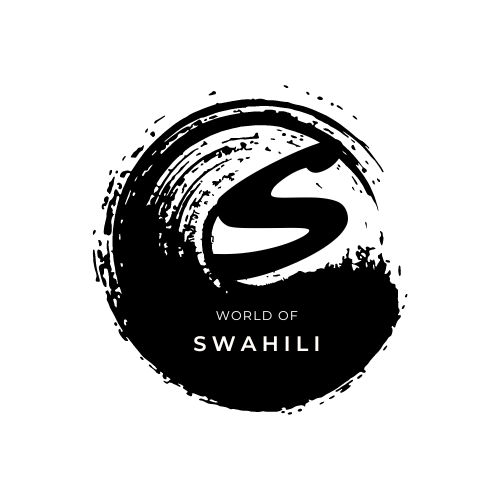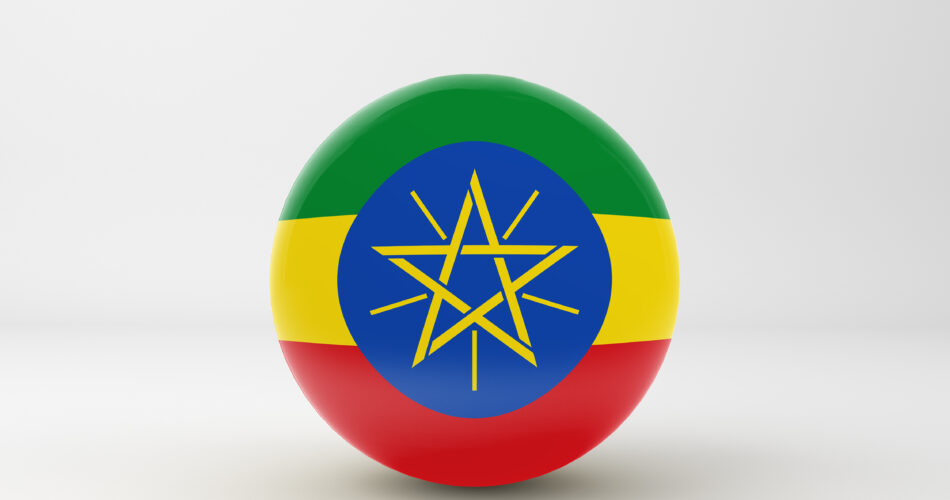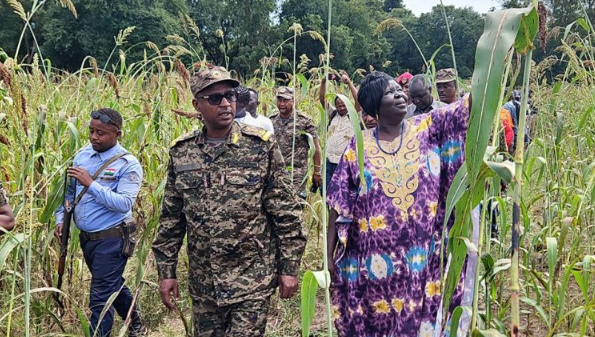Oduu WBO Yeroo Ammaa – Seensa
Table of Contents
Oduu WBO Yeroo Ammaa (Current News of the Oromo Liberation Army) is a report that provides up-to-date information on the activities, developments, and key events surrounding the Oromo Liberation Army, often known by its Afaan Oromoo acronym, WBO (Waraana Bilisummaa Oromoo). This news source is vital for understanding the complex socio-political dynamics within Ethiopia, particularly in the Oromia region, where WBO is active. By staying informed through Oduu WBO Yeroo Ammaa, readers gain insights into ongoing efforts, challenges, and evolving stances affecting the Oromo population and the broader political landscape in Ethiopia.
The WBO has a long history as an armed resistance movement rooted in the Oromo struggle for autonomy, justice, and cultural recognition within Ethiopia. Established to address perceived marginalization and injustices faced by the Oromo people, the oduu wbo yeroo ammaa role has been shaped by its aim to achieve self-determination for Oromia, Ethiopia’s largest region, where the Oromo people are the majority. Over the years, oduu wbo yeroo ammaa has grown from a small group into a significant armed force, symbolizing Oromo resistance and identity. The group’s activities often bring about both national and international attention, reflecting the underlying tensions between regional autonomy aspirations and the Ethiopian federal government.
For new readers, understanding oduu wbo yeroo ammaa position is crucial to grasping the wider implications of Ethiopia’s current political, ethnic, and security challenges. Oduu WBO Yeroo Ammaa serves as an essential source for those who want to follow these developments closely, as they can impact not only the Oromo community but also the stability of the entire Horn of Africa region.
Oduu WBO Yeroo Ammaa: Haala Ammaa fi Odeeffannoo Haarawa
1. Haala Ammaa – Overview of Current Status
In recent reports, Oduu WBO Yeroo Ammaa has highlighted an increase in WBO activities and tactical operations across various regions within Oromia. The movement remains focused on intensifying its efforts for regional autonomy, citing ongoing grievances against the Ethiopian federal government. There has been a noticeable shift in the organization’s approach, with oduu wbo yeroo ammaa focusing on expanding its reach and reinforcing its presence in strategic areas. This development reflects a continued commitment to advocating for the Oromo people’s rights, aiming to draw greater national and international attention to its cause.
2. Significant Incidents – Key Events and Developments
Recent weeks have seen several significant incidents involving oduu wbo yeroo ammaa forces, particularly in the Western and Southern Oromia regions. Notable engagements between WBO units and Ethiopian federal forces have resulted in escalated confrontations, with reports indicating casualties on both sides. Additionally, Oduu WBO Yeroo Ammaa has documented WBO’s growing alliances with local communities, which have offered support to oduu wbo yeroo ammaa fighters in these zones. Key incidents have included targeted attacks on military checkpoints and strategic infrastructures, signaling a focused effort to disrupt government operations in Oromia and highlight the intensity of the Oromo struggle.
Furthermore, recent reports have mentioned oduu wbo yeroo ammaa emphasis on protecting civilians, addressing previous criticisms about potential impacts on local communities. The group claims to be adopting strategies aimed at minimizing harm to non-combatants, which could be a tactical shift designed to gain greater support from the local Oromo population.
3. Strategic Areas and Operations – Areas of High Activity and Tactical Adjustments
oduu wbo yeroo ammaa activities remain concentrated in regions such as Guji, Wollega, and Borena, which have historically been strongholds for the movement due to both geographical advantages and substantial local support. Recently, WBO operations in these areas have been characterized by guerrilla-style tactics, including ambushes and quick, strategic withdrawals to avoid heavy losses. In response to intensified federal military campaigns, the oduu wbo yeroo ammaa has reportedly increased its mobility, shifting its bases frequently and employing a decentralized command structure to better manage smaller units across Oromia.
In addition to these adjustments, Oduu WBO Yeroo Ammaa has highlighted a new emphasis on intelligence gathering and coordination with sympathetic groups. This has enabled the WBO to carry out operations with greater precision, enhancing their effectiveness and allowing them to maintain pressure on Ethiopian federal forces despite facing resource constraints.
By staying informed through Oduu WBO Yeroo Ammaa, readers can track the evolving tactics, priorities, and incidents involving the WBO, offering a deeper understanding of the Oromo struggle and its broader implications in the Horn of Africa.
Hariiroo Mootummaa fi WBO: Oduu Yeroo Ammaa
1. Hariiroo Yeroo Ammaa – Current Relationship Overview
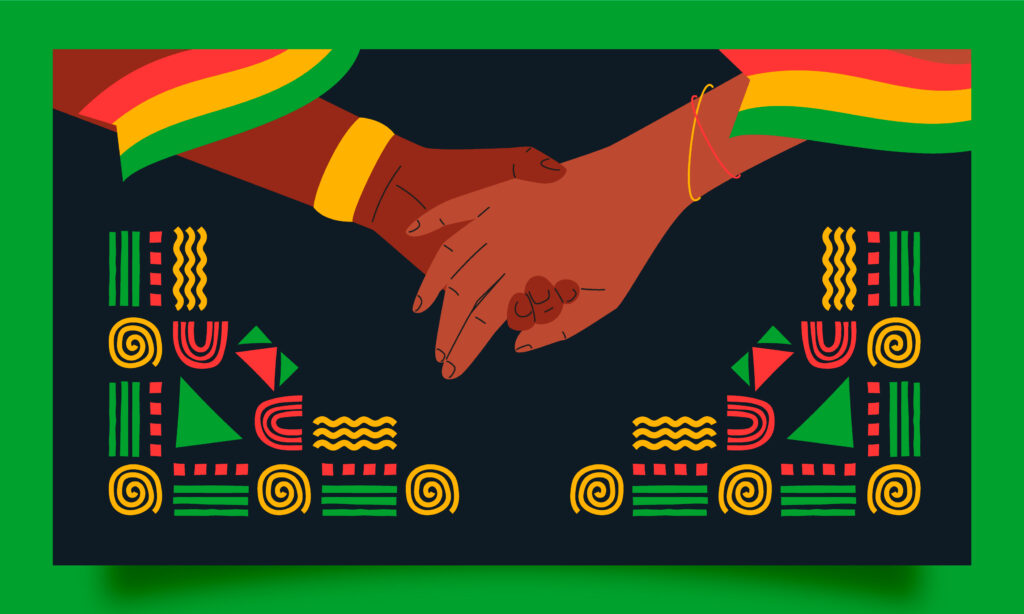
The relationship between the Ethiopian government and the oduu wbo yeroo ammaa remains tense, with limited progress toward a peaceful resolution. According to recent reports in Oduu WBO Yeroo Ammaa, the Ethiopian government has intensified military operations in key WBO strongholds, while WBO forces have responded with increased resistance. This escalation signals a mutual reluctance to yield ground, underscoring the ongoing divide in interests and demands. The government views oduu wbo yeroo ammaa as a threat to national stability, while oduu wbo yeroo ammaa maintains that their struggle is rooted in long-standing Oromo grievances around rights, political representation, and regional autonomy.
2. Negotiations and Confrontations – Key Developments
There have been occasional calls for negotiations between the two parties, but efforts have largely stalled. Although certain reports earlier in the year hinted at possible mediation efforts by international actors, there has been no substantive public progress. Recent incidents covered in Oduu WBO Yeroo Ammaa reveal continued clashes rather than dialogue, with confrontations escalating in areas like Western Oromia and Guji. This ongoing conflict has not only strained government and oduu wbo yeroo ammaa resources but has also deepened the mistrust between the two sides, making negotiations appear increasingly unlikely.
oduu wbo yeroo ammaa has repeatedly stated its conditions for entering talks, which include demands for recognition of Oromo rights and regional autonomy. The Ethiopian government, however, has been hesitant to grant any concessions that could be seen as undermining national unity. This deadlock is fueling confrontations, as both sides attempt to assert control over disputed territories and assert their vision for the country’s future.
3. Impact on Peace Efforts and Conflict Dynamics
The lack of meaningful dialogue and the continuing hostilities have significant implications for peace efforts in Ethiopia. The escalating conflict not only affects Oromia but also has the potential to destabilize neighboring regions, impacting the broader Horn of Africa. The ongoing confrontations, as reported by Oduu WBO Yeroo Ammaa, are straining local communities and creating an environment where grievances continue to deepen, which could potentially fuel further resistance among the Oromo population and other marginalized groups.
For peace to become a viable option, trust-building measures, potentially through neutral mediators, would need to be established. However, without signs of compromise from either side, these prospects remain dim. The intensifying conflict risks prolonging the humanitarian crisis in affected areas, and if left unaddressed, it may also hinder broader efforts for stability within Ethiopia and its surrounding region.
In conclusion, Oduu WBO Yeroo Ammaa suggests that unless there is a shift towards genuine negotiation and compromise, the cycle of confrontation between the Ethiopian government and WBO is likely to continue. This tension not only impedes peace but also threatens to further complicate Ethiopia’s efforts to foster national cohesion, creating significant uncertainties for both sides and the region at large.
Dhiibbaa Oduu WBO Yeroo Ammaa Irratti Ummata Naannoo fi Jiraattota
1. Rakkoo Namaa – Humanitarian Issues Facing Civilians
The intensifying conflict between oduu wbo yeroo ammaa and Ethiopian government forces, as reported in Oduu WBO Yeroo Ammaa, has created significant humanitarian challenges for the Oromo civilian population. Frequent clashes and military operations have disrupted everyday life, with local communities facing shortages of basic necessities such as food, clean water, and medical supplies. Access to healthcare and educational services has been severely affected, especially in rural areas where movement is restricted due to security concerns. The presence of active conflict zones has limited humanitarian organizations’ access, further straining resources and increasing the population’s vulnerability.
2. Godaansaa fi Baqachuu – Displacement and Forced Migration
Recent updates from Oduu WBO Yeroo Ammaa highlight an alarming rise in the number of displaced individuals within Oromia. As oduu wbo yeroo ammaa and government forces engage in skirmishes, civilians in conflict-prone areas, particularly in Western and Southern Oromia, have been forced to abandon their homes, seeking safety in less affected regions or neighboring areas. This mass displacement is creating overcrowded living conditions, with families often lacking adequate shelter, sanitation, and security.
The displacement crisis has also led to increased pressure on host communities, where resources are already scarce. Displaced persons, many of whom are farmers, have lost access to their land, disrupting their means of livelihood and worsening food insecurity. This forced migration further disrupts children’s education, as displaced families struggle to settle in unfamiliar areas without proper support systems.
3. Yaaddoo Nageenyaa – Security Concerns and Civilian Safety
With heightened oduu wbo yeroo ammaa activities and government military responses, civilian safety is a constant concern. According to Oduu WBO Yeroo Ammaa, many communities report ongoing fears of being caught in the crossfire, which has led to a rise in self-imposed restrictions on movement and travel. Some residents avoid areas where there is military presence to minimize the risk of collateral harm. Additionally, reports of targeted attacks and counter-attacks near villages and towns have instilled a climate of fear and uncertainty, particularly as roads and infrastructure are impacted.
To address these challenges, communities have taken to organizing local safety networks, sharing information on potential conflict zones to help neighbors avoid danger. However, such measures are limited in their effectiveness as the conflict remains unpredictable and widespread. The rising sense of insecurity has also spurred mistrust between civilians and both oduu wbo yeroo ammaa and government forces, with accusations of forced conscription or coercion reported from both sides.
4. Deebii Ummataa fi Cimina Rakkoo – Civilian Responses and Ongoing Struggles
Civilians oduu wbo yeroo ammaa in the Oromo region are displaying resilience but continue to face immense challenges in adapting to these harsh conditions. Community leaders and local groups have taken initiative in organizing support networks, gathering resources, and disseminating critical safety information. However, these grassroots efforts cannot replace the urgent need for humanitarian aid and security guarantees.
Many families are increasingly advocating for peace, voicing frustration over the continued violence and calling for a resolution that respects their rights and livelihoods. Nevertheless, with little progress in peace talks and the persistent nature of the conflict, the situation remains precarious. The uncertainty of safety, livelihood, and future prospects is weighing heavily on these communities, deepening a humanitarian crisis that demands immediate national and international attention.
In sum, the updates from Oduu WBO Yeroo Ammaa reveal a civilian population deeply affected by displacement, insecurity, and a lack of basic resources. The ongoing confrontations and the lack of a clear path to peace present daunting challenges for the people of Oromia, who continue to call for stability and humanitarian support amidst a highly volatile situation.
Qubee Hawaasa fi Tamsaasa Oduu WBO Yeroo Ammaa

1. Tamsaasa Oduu WBO Yeroo Ammaa – Coverage by Local and International Media
Coverage of Oduu WBO Yeroo Ammaa varies widely between local and international media outlets. Local Ethiopian media, especially state-affiliated channels, often report from the government’s perspective, focusing on the security threats posed by oduu wbo yeroo ammaa activities and framing the conflict as a national stability issue. Independent Ethiopian media and diaspora-based outlets, however, tend to provide a broader view, sometimes including accounts from Oromo communities and perspectives sympathetic to the oduu wbo yeroo ammaa objectives of regional autonomy and representation. These sources help convey the complex socio-political dynamics behind the movement, emphasizing the group’s motivations rooted in historic grievances of the Oromo people.
International media coverage, meanwhile, is relatively limited and sporadic, primarily picking up significant events such as large-scale conflicts, humanitarian impacts, or high-level political developments. Due to the language barrier and Ethiopia’s complex internal dynamics, international outlets may sometimes oversimplify oduu wbo yeroo ammaa related issues, focusing more on regional security risks than on the underlying causes of the conflict. This limited and sometimes skewed coverage can impact the international community’s understanding and response to the Oromo struggle and the humanitarian crisis in the region.
2. Social Media’s Role in Disseminating Oduu WBO Yeroo Ammaa
Social media has become a crucial platform for disseminating Oduu WBO Yeroo Ammaa, particularly among the Oromo diaspora and youth. Platforms like Facebook, Twitter, and Telegram are widely used by oduu wbo yeroo ammaa supporters, independent journalists, and activists to share real-time updates, video footage, and local testimonies. This grassroots-level distribution has given Oromo voices a broader reach, helping them to counterbalance government narratives and bring attention to the realities on the ground.
However, social media also has its challenges. The rapid spread of information often includes unverified or biased content, which can shape public opinion in ways that may not always be accurate or constructive. Both pro-WBO and pro-government narratives are amplified, with each side striving to control the narrative. Social media has thus become both a tool for advocacy and a battleground of competing narratives, affecting how people perceive oduu wbo yeroo ammaa actions, goals, and the overall conflict.
3. Dursa Odeeffannoo Waliinii – Importance of Reliable Sources for Accurate Information
Given the high stakes and sensitivities surrounding oduu wbo yeroo ammaa activities and the government’s response, accurate and reliable information is essential. Misreporting or unverified claims can lead to misinformation, further inflaming tensions and affecting public opinion. Reliable sources—such as reports from neutral human rights organizations, independent journalists, and credible local media—are critical in providing a balanced view of events. This information is key for those affected by the conflict, humanitarian organizations, and policymakers who rely on accurate data to make informed decisions.
In times of heightened conflict, there is an even greater need for reliable information to understand oduu wbo yeroo ammaa role and objectives, as well as the humanitarian situation. For the local and international community to address the crisis effectively, they require dependable sources that can navigate the complexities of Ethiopian politics and accurately represent the experiences and needs of affected communities.
In summary, while Oduu WBO Yeroo Ammaa is a primary source of updates on oduu wbo yeroo ammaa activities, how it’s reported by local and international media, and the influence of social media on public opinion, shape the conflict’s narrative. Reliable, fact-based reporting remains essential to understanding and addressing the complexities surrounding oduu wbo yeroo ammaa and its impact on the Oromo people and Ethiopia’s future stability.
Oduu WBO Yeroo Ammaa: Ilaalchaafi Hanga Yeroo Egeree
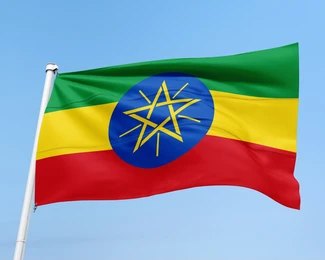
1. Hanga Yeroo Egeree – Potential Paths Forward for oduu wbo yeroo ammaa
Based on recent reports in Oduu WBO Yeroo Ammaa, the oduu wbo yeroo ammaa appears determined to sustain its armed resistance in pursuit of greater autonomy and representation for the Oromo people. The primary paths forward seem to be either continued armed conflict or a shift toward negotiation. If the Ethiopian government remains resistant to WBO’s demands, experts believe WBO may continue its current strategy of guerilla tactics across strategic regions like Western Oromia, Guji, and Borena. This approach aims to maintain pressure on the government and highlight the unresolved issues surrounding Oromo rights and autonomy.
Alternatively, if a viable negotiation framework with external mediation arises, there may be potential for a peace dialogue. However, this path would require trust-building measures and concessions from both sides. As of now, though, Oduu WBO Yeroo Ammaa suggests little optimism for immediate peace, as clashes remain frequent and grievances are deep-rooted.
2. Ilaalcha Ogessota – Expert Opinions on oduu wbo yeroo ammaa and the Future of the Oromo Liberation Movement
Political analysts and experts on Ethiopian affairs see oduu wbo yeroo ammaa as a significant force in the Oromo liberation movement. Many experts argue that the WBO’s continued presence reflects unresolved historical grievances among the Oromo people, including perceived marginalization and cultural suppression. Analysts highlighted in Oduu WBO Yeroo Ammaa believe that unless these foundational issues are addressed, oduu wbo yeroo ammaa will likely continue to find support within the Oromo community, especially among youth and the diaspora.
Some experts see the Oromo Liberation Movement, including oduu wbo yeroo ammaa , as evolving toward a broader political and social movement, not just an armed resistance. They suggest that oduu wbo yeroo ammaa may eventually pursue a strategy combining armed struggle with political negotiations, given that military action alone may not secure lasting autonomy. However, the movement’s future heavily depends on Ethiopian government responses and whether other Oromo political groups, such as the Oromo Liberation Front (OLF), can coordinate effectively with oduu wbo yeroo ammaa to push a unified agenda.
3. Dorgommii Idil-Addunyaa fi Tamsaasa Siyaasaa – Expected International Moves and Their Impact
International bodies have so far been relatively cautious about direct involvement in the oduu wbo yeroo ammaasituation, though recent reports suggest rising concern. Some human rights organizations and foreign governments have criticized the humanitarian impact of the conflict in Oromia, particularly displacement and civilian safety issues highlighted in Oduu WBO Yeroo Ammaa. This pressure may drive international bodies, such as the African Union or the United Nations, to advocate for a mediated peace process, potentially providing neutral ground for discussions.
Additionally, several countries with large Oromo diaspora populations, like the United States, have expressed interest in monitoring the situation closely. International human rights groups may continue to raise awareness on the conflict’s impacts, pressuring both Ethiopian authorities and oduu wbo yeroo ammaa to reduce violence. Should international actors advocate for or directly support a negotiation framework, this could facilitate a peace dialogue and encourage oduu wbo yeroo ammaa to participate, especially if such negotiations include discussions on regional autonomy and human rights protections.
4. Qophii fi Akeeka oduu wbo yeroo ammaa – Future Strategy and Potential Scenarios
Looking ahead, Oduu WBO Yeroo Ammaa indicates that WBO’s near-term strategy will likely remain a combination of tactical resistance and localized engagement with communities to build grassroots support. If the Ethiopian government intensifies military responses without addressing underlying grievances, oduu wbo yeroo ammaa may increase its activities, potentially drawing more media and international attention to the Oromo cause.
However, if there are signs of softening in the Ethiopian government’s stance, a transition to peace talks could present an opportunity for oduu wbo yeroo ammaa to achieve some of its goals without further conflict. This scenario would benefit civilians the most, reducing displacement and humanitarian impacts, and would provide a path toward long-term stability in Oromia.
In conclusion, Oduu WBO Yeroo Ammaa reveals both the complexities and potential pathways for the oduu wbo yeroo ammaa and the Oromo Liberation Movement. While the likelihood of continued conflict remains high, external mediation, international involvement, and unified Oromo political representation could shape a more peaceful future. For now, the path forward hinges on both domestic political shifts and increased international engagement to support sustainable resolutions.
Xumura: Murteessaa Oduu WBO Yeroo Ammaa
Oduu WBO Yeroo Ammaa remains essential for understanding the ongoing tensions and regional dynamics within Oromia and Ethiopia at large. Key points from the latest updates underscore the persistent confrontations between WBO and government forces, the severe humanitarian challenges faced by civilians—including displacement, insecurity, and limited access to basic needs—and the crucial role of media, especially social platforms, in shaping public perception of the conflict. These updates reveal the deeply rooted grievances that continue to fuel the oduu wbo yeroo ammaa mission, as well as the divided viewpoints between government and Oromo communities regarding paths to peace and autonomy.
Looking ahead, the path forward will likely involve both conflict and attempts at negotiation, with potential for international bodies to influence peace-building efforts. As long as Oduu WBO Yeroo Ammaa provides timely, reliable information, it plays a vital role in spreading awareness about the complexities of the Oromo struggle, shaping informed opinions, and inspiring constructive dialogue. Continued coverage not only informs local and international communities but also keeps pressure on all parties to work toward solutions that respect the rights and aspirations of the Oromo people. This ongoing coverage is thus indispensable, as it fosters awareness, encourages accountability, and holds the potential to advance peaceful resolutions in the region.
